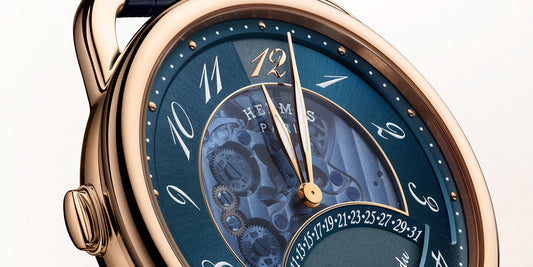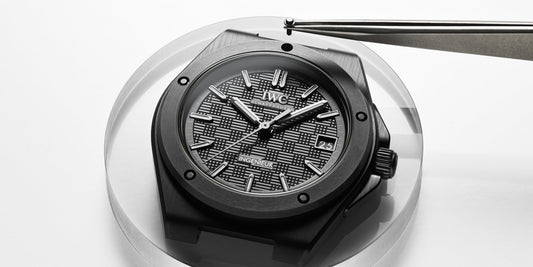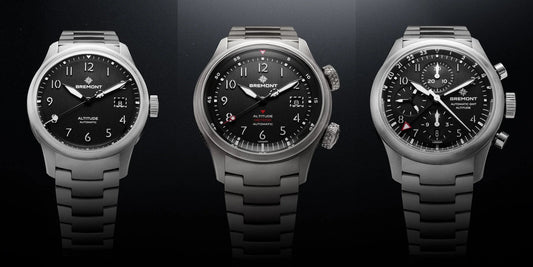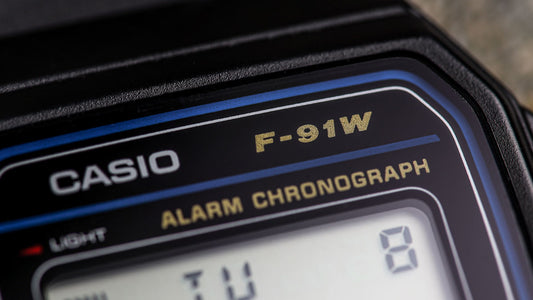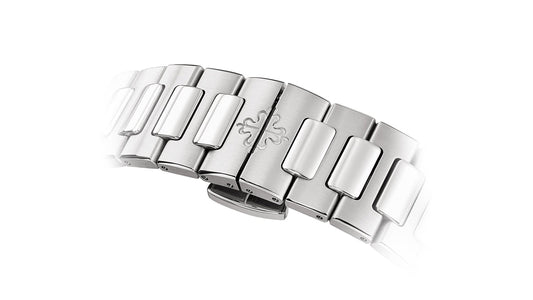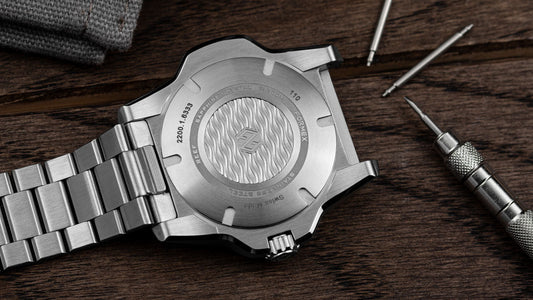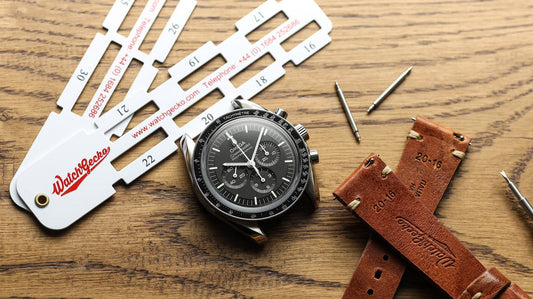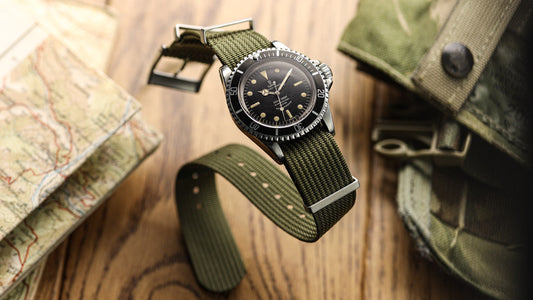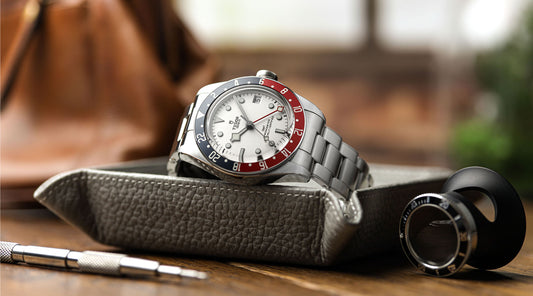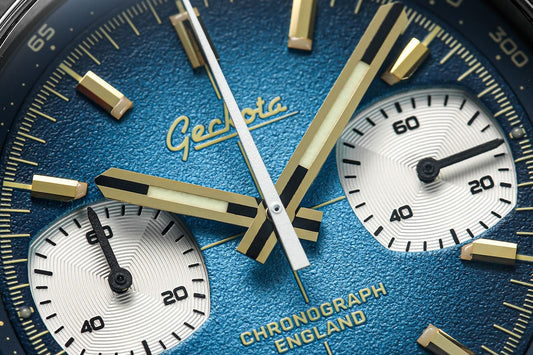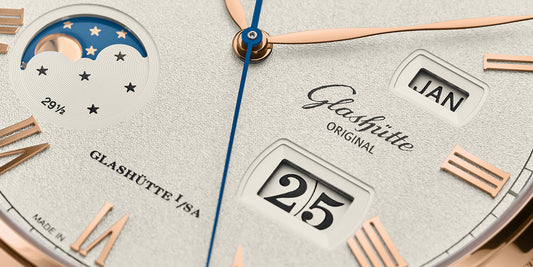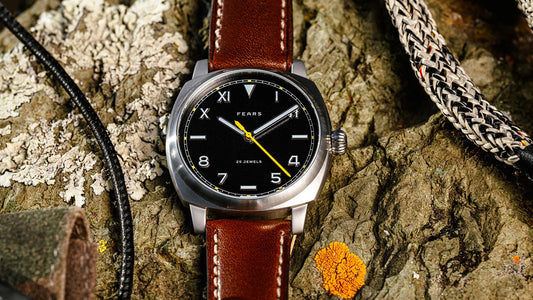The NTH DevilRay Diver in vintage grey is certainly an eye-catcher, there's no doubt about that, but does it measure up in all the areas that it should?

NTH/WatchGecko DevilRay on ZULUDIVER Typhoon - Credit WatchGecko
This particular DevilRay is a collaboration between NTH and WatchGecko, with only 25 pieces initially available. Collaborations such as these offer the customer an opportunity to own a watch that's a little bit special and unavailable anywhere else. It's always nice to have something that you're unlikely to see anyone else wearing, especially a watch! With that said, a dive watch is a little more complicated, as it's a functional tool that, when called upon to do so, is expected to perform an important task under difficult conditions. Although many modern divers rely almost totally on dive computers, I would never dive without my trusty dive watch as a back-up instrument. Let's take a look at the DevilRay in a little more detail and find out what's going on. First up is a general specification before we get down to the nitty-gritty.
First some critical specs:
- Case diameter: 43mm.
- Case material: S316L stainless steel.
- Case finish: Brushed and polished.
- Case design: Cushion.
- Lug width: 22mm.
- Lug-to-lug: 46mm.
- Thickness: 14,5mm
- Caseback: Screw-down with 'Manta Ray' logo in relief.
- Crystal: Double-domed sapphire with AR coating.
- Movement: Seiko Automatic NH35A.
- Date window: 3 o'clock position.
- Crown: Screw-down.
- Bezel: Partially lumed, uni-directional 120-click with DLC stainless steel insert.
- Water resistance: 500m.
- Warranty: 6 years on the movement by NTH.
- Weight of watch head: 95g.
 NTH/WatchGecko DevilRay - Credit WatchGecko
NTH/WatchGecko DevilRay - Credit WatchGecko
Dive a little deeper
The diving watch category is jam-packed with contenders, all trying to secure sales during these difficult times. Dive watches have always enjoyed a strong popularity, evoking thoughts of deep-sea exploration and adventure, along with the odd nautical nightmare no doubt. Looks however, are one thing, and a watch that can actually perform faultlessly in such a hostile environment is something quite different. Generally speaking, 300m is what you'd want to see on the dial of a dive watch if you're using it in anger, so to speak. If it's got 'Diver's' on the dial, with the apostrophe between the 'r' and the 's' that's even better, as this confirms that the watch meets a certain specification. The DevilRay has 500m on its dial, so we're off to a good, solid start, but that's only the first box ticked! There are four more areas that need to be assessed in order to confirm that the DevilRay is fit for purpose.
Will it keep going?
Time underwater is not only short, but incredibly important, so a reliable movement is high on the list. Beating inside the DevilRay is the Seiko NH35A, which is, to all intents and purposes a Seiko 4R35, with this latter designation only fitted into Seiko watches. The NH35A is an ultra-reliable, workhorse movement with no inherent problems, its stated -20/+40 sec./day tolerance is pessimistic and rarely approached, with the vast majority of movements running within, or well below -10/+10 sec./day under all conditions. I have two diving watches with this movement and both run consistently between -0/+5 sec./day! The NH35A is an automatic movement with hand-winding and hacking capability. Power reserve is around the 40 hour mark and it chugs along quite happily at 21,600vph. It is equipped with the 'Diashock' anti-shock system and is pretty robust under all conditions. It has 24 jewels and a date complication. Watch geeks often shun this basic movement, but make no mistake, it's well up to the job in hand. We are now able to place a tick in box number two!

NTH/WatchGecko DevilRay on ZULUDIVER Typhoon - Credit WatchGecko
Can you see it?
Next up is the clarity. It's no use having a diving watch that's reliable and depth capable if you can't read it! The DevilRay has a relatively uncluttered dial with large, applied indices, a sword type hour hand, a baton type minute hand in orange and an orange-tipped seconds hand, all with a generous amount of lume. The rotating bezel is only partially lumed and has traditional dive markings on the inner track with 12 hour markings on the outer track. This duel-ring bezel is reminiscent of the DOXA in many ways and works extremely well. The lume on the seconds hand is incredibly important, not so much from a timing point of view but it indicates that the movement is running. Should the movement stop and go unnoticed, your 'bottom time' may be extended, placing you in an exceptionally dangerous situation. With all that covered, we can now place a tick in box number three!
The bits that turn!
There are two bits that we need to turn on occasion, the first being the crown and the second being the bezel. The circumference of the crown has a saw-tooth profile rather than the more traditional straight knurl. This makes a nice change as well as providing a better purchase when screwing the crown back in, although it shouldn't be overtightened. The rotation of the crown is smooth in both directions and catches the thread cleanly following any adjustment. Time and date adjustments are silky, predictable and drama free. The bezel is equally competent at performing its task, with the outer edge following the same trend as the crown, having a saw-tooth profile. The bezel nestles into the case on the sides making it very resilient to any accidental movement. The best way to set the bezel is by using your thumb and middle finger between the 11-1 and the 5-7 positions; in this area the bezel presents its full depth. The DevilRay has a 120 click, uni-directional bezel, as one would expect and the alignment on this particular watch was bang on, which is always nice to see. The actual operation was firm and crisp, with the saw-tooth outer edge offering not only excellent traction but also quick, precise positioning. When diving, the bezel is adjusted just before descent, and that generally means when you're actually in the water; your gloves are thick and wet, a poor bezel is difficult to operate and extremely annoying to say the least! The 12 hour outer track may be used to monitor a second time zone and is a nice feature, also adding that little extra something on the aesthetic front! Box number four receives its well-earned tick!

NTH/WatchGecko DevilRay - Credit WatchGecko
The lume!
Although the actual clarity has been covered earlier, the importance of good lume on a dive watch cannot be overstressed. In the old days you used a set of dive tables, a depth gauge and a watch when diving, but nowadays dive computers are undoubtedly the way forward; however, with that said, I'd dive with a watch and no dive computer, but I'd never dive with a dive computer and no watch! Time underwater is incredibly important and needs to be available under any conditions that may be encountered, and that includes darkness! The lume on the DevilRay is more than adequate for this purpose; it's bright and long lasting. It's unfortunate that the elapsed time part of the rotating bezel's inner track isn't lumed, as this really is the important bit under water. I would have much preferred to see the lume on the 12 hour track omitted rather than that on the elapsed time ring. Even so, the 'pip' is visible and that's all there is on a Rolex Submariner or Sea-Dweller! Box number five receives its tick of approval!
The main five!
The DevilRay certainly has the main attributes that a diver looks for in a dive watch, and should give many years of good, reliable service. 500M of water resistance is more than acceptable and nothing should come close to bothering it, certainly in the world of scuba diving! The great thing about the DevilRay is that it doesn't look out of place when worn every day, and that's something that shouldn't be overlooked. Some dedicated dive watches are almost unwearable in everyday life so the DevilRay makes a lot of sense, especially if your adventures also take you away from the water and are, shall we say, less moist.

NTH/WatchGecko DevilRay - Credit WatchGecko
Accuracy
Although I've covered this in more general terms earlier in the article, I need to report on the accuracy of this particular movement while cased in the DevilRay. Over the seven day period it had gained 1 second! When not being worn, the DevilRay was placed in the dial-down position and this was determined as follows. On first setting the time, a quick look on the timegrapher revealed that the DevilRay should lose a few seconds during the day and then gain a few seconds during the night while in the dial-down position. This is, of course, only a guide, as it's not being worn while it's on the timegrapher; however, we need a place from which to start and generally, it's a reasonable guide. In fact, the deviation suggested by the timegrapher turned out to be a little pessimistic, and the actual deviation from true time was never more than -2/+2 seconds at any time during those seven days, checking it two or three times in each 24 hour period as I would do with any watch on a seven day review.
At the end of the seven days I checked the time in the morning and, pretty much as expected, it was up on time by 1 second; however, I'm pretty sure that the 1 second would have rectified itself at some point after lunch! With that said, the seven days ended that morning and the DevilRay was 1 second up, so that's the result I have to work with. As we can see, the 1 second gain gives an overall accuracy during those seven days of 99.99983466% and that's better than exceptional to say the very least! In fact, that's an average cumulative gain of only 0.142857143 seconds a day! My life is pretty active and the same watch may not keep such good time on someone else that's either less, or indeed more active; however, a small adjustment to the regulation to suit that particular person should put things right.
The timekeeping of this particular DevilRay is bordering on the impossible, and it's certainly brought a smile to my face on a number of occasions during the last seven days. It's these things that make automatic movements so interesting, especially to mechanical engineers! Seiko seem to play down this movement but in reality, it does so much more than just cut the mustard; of course, this can't be guaranteed or even expected from an NH35A, but I've not seen a particularly bad one yet! If that's the case, why buy a watch with an expensive chronometer certified movement? Well! There is so much more to this, and keeping good time is only part of it, but that's for a long, long, long, dedicated article where individual statements can't be isolated and then taken out of context!
I'm sure that many of you are wondering how I check the time, and that's an easy one to answer. The 'Time and Date' website gives the exact time, but I also have a Casio GW-3500B-1AER that's equipped with 'Multi-Band 6' and I often use that for intermediate checks; however, if there's an unexpected discrepancy the 'Time and Date' website will take precedence as the watch was initially synchronised to that time source.
How does it wear?
The NTH DeviRay arrived on a ZULUDIVER Typhoon sailcloth strap and I have to say that it suits the DevilRay perfectly. I've dived with this strap on quite a few occasions and it's completely waterproof, not only that, it's also a great strap for normal, everyday wear. I have one on a Certina DS Action Powematic 80 GMT 200m and it not only looks fantastic, it's also incredibly comfortable. The Typhoon sailcloth held the DevilRay in place no matter where I went or whatever I got up to; the importance of a strap that suits the watch cannot be overstated. The DevilRay wears extremely well for a 500m dive watch, so much so that most of the time you forget that you're wearing it! As I've mentioned in previous articles, I tend to favour straps that pass through both spring-bars, purely because of the additional security. As any diver will tell you, your dive watch will get caught on all sorts of things and a 'popped' spring-bar can see your beloved dive watch exploring the depths without you! With a strap that passes through both spring-bars, should the unthinkable happen, the watch will just swing about on the remaining spring-bar.
At this point you can remove it and place it safely in your BCD pocket. Although I didn't actually get the chance to take the DevilRay diving, I did manage a longish hike, a cross-country run and a lengthy foray in the snow, where it spent fifteen minutes or so encased in a snowball while I had a mug of coffee from the flask, through all of which it performed admirably. The cushion case plays a major part in the DevilRay's comfort, but not only that, the entire package is extremely well executed. The case itself is completely brushed except for a narrow, curved band that runs along the centre on either side, this being polished; the whole thing looks great from any angle. The NTH DevilRay is not only a dive watch but also a great watch for all types of outdoor adventures, wherever they may be!

NTH/WatchGecko DevilRay - Credit WatchGecko
Niggles and gripes
For a 500m diving watch at this price, the DevilRay's features are impressive. The omission of the lume on the elapsed time ring is really the only thing that lets it down for actually diving. I can understand why WatchGecko made the decision to use black infill on the bezel's inner minute track, as it undoubtedly looks sharper and much more defined; however, with 500m on the DevilRay's dial, actual performance, in my opinion, must take presedence over aesthetics. I know that this may seem unimportant to some, but it's a review and it would be incorrect of me not to mention it. On the upside, to have only one item in the niggles and gripes department, the NTH DevilRay has done extremely well and this really should be commended.
The last word
For a dive watch, 500m is, unquestionably, very respectable; it is also a strong indication of the DevilRay's overall toughness when performing other tasks. There are a number of different variations if grey isn't your thing, and there's also a GMT version for those that often travel abroad. The overall quality of the watch appears good and consistent throughout; I'd even say exceptional at this price! The DevilRay comes on a bracelet but I can't comment on this as I haven't actually seen it; however, should the bracelet match the standard of the rest of the watch, I wouldn't have thought that there was a great deal to worry about. I know that Richard, the Editor-in-Chief, has taken a bit of a shine to this one, so I thought it wise to be especially careful with it; experience dictates that it's rarely beneficial to return the editor's watch in a number of small pieces, bagged or otherwise. That said, after a week with the NTH DevilRay, I'm pretty certain that it would take much more than the odd knock or two to cause it any real problems!


